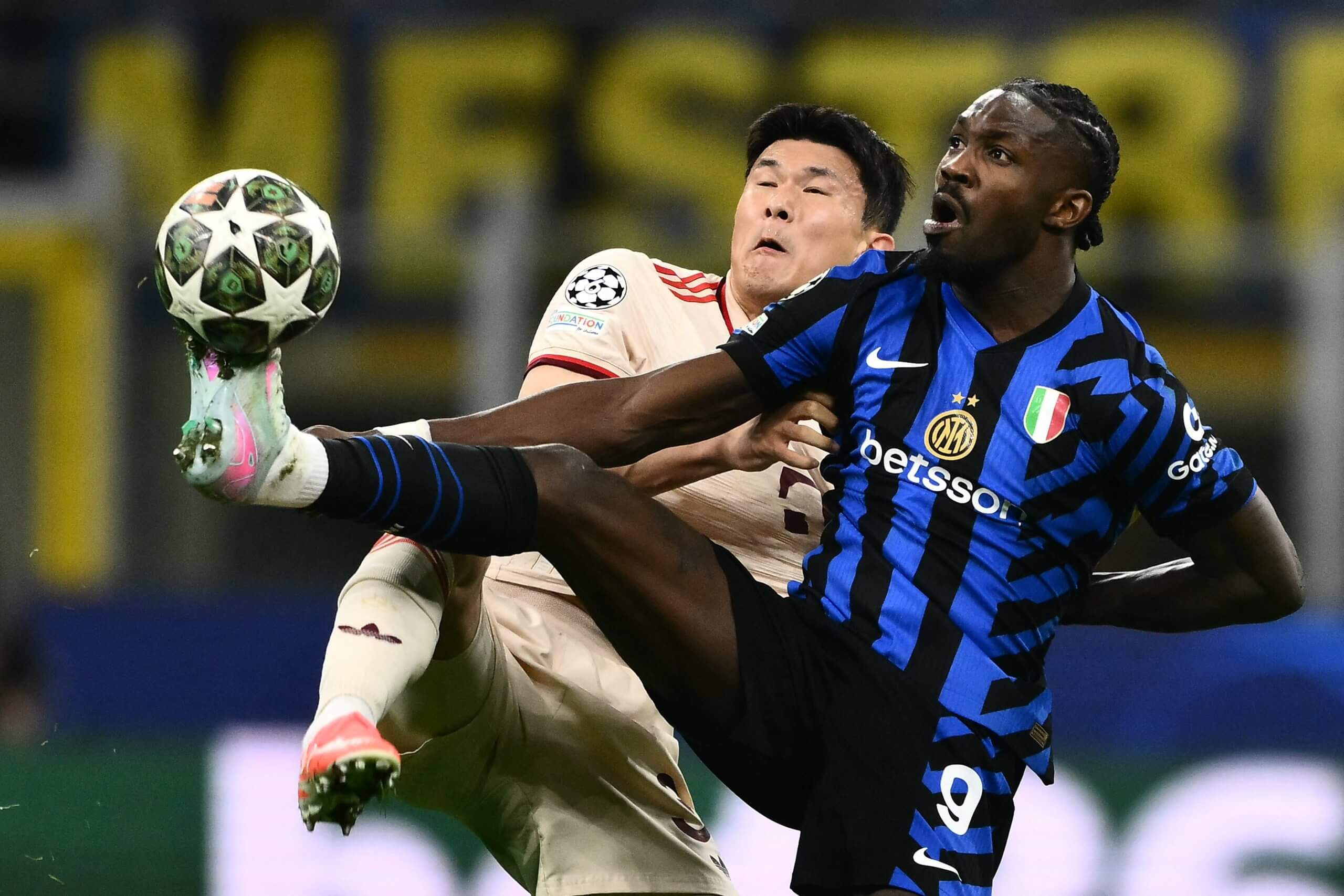
There are seasons when the Champions League semi-finals are dominated by clubs from a single country. Sometimes there are even multiple clubs from the same city. But 2024-25 feels a bit more like what the competition is supposed to be about.
The five remaining matches will be played in England, France, Spain, Italy and Germany. Arsenal, Paris Saint-Germain, Barcelona and Inter will each host a semi-final. After that, Munich will host the final, with the locals’ hopes of seeing Bayern contesting a final on home soil, as they did in 2012, ended by their 4-3 aggregate defeat to Inter on Wednesday night.
Advertisement
Of the sides remaining the competition, there is a fair amount of inter-country mingling. The English and French clubs are managed by Spaniards, and the Spanish club by a German.
But Inter feel more typical of their nation. In Simone Inzaghi they have a homegrown coach. Six of their 11 starters against Bayern on Wednesday night were born in Italy. The bookmakers rank Inter as the outsiders to win this competition. But their unusual style might give them an unexpected advantage because they’re very different to the other sides left in contention.

An animated Inzaghi on the touchline (Marco Luzzani/Getty Images)
On the one hand, Inter are old-school Italian.
Against Bayern they were happy to defend deep for long periods and made some excellent last-ditch blocks. In domestic league competition this season, they have the highest aerial success rate, 59 per cent, of any side — over three per cent clear of their closest challengers across Europe’s major leagues in that respect (who are, as it happens, Bayern). Both their goals in the 2-2 second leg draw against Bayern came from set-pieces.
The three-man defence means they are the only top side in Europe playing wing-backs, which has become something of an Italian obsession over the last decade or so, and therefore their wing play is about off-the-ball running rather than dribbling. They attempted fewer dribbles than any side in Europe’s major five leagues last season.
They rely on breaking quickly more than the other sides in the competition, often playing around-the-corner passes to move forward quickly, and they are also the only side playing a strike partnership. The way Marcus Thuram teed up Lautaro Martinez for the opening goal in the first leg in Munich — a selfless back heel which prompted a clever poked finish — shows the value of playing in that manner.
In the second leg, both Bayern centre-backs, Eric Dier and Kim Min-jae, were booked before half-time having dived in on Thuram. Because the strike partnership invites defenders to play man-to-man and become involved in running battles, that was a dangerous situation for Bayern, and Kim was substituted midway through the second half.

Kim struggles to compete with Thuram (Marco Bertorello/AFP via Getty Images)
At the same time, Inter also feel like the most progressive side of the four semi-finalists.
Their midfield partnership is comprised of three genuinely talented ball-players. Hakan Calhanoglu is essentially a converted No 10 playing in the deep role. Henrikh Mkhitaryan was once a goalscoring No 10, who has learned to play the left-centre role expertly. The most workmanlike of the three is actually the most advanced, with Nicolo Barella constantly trying to run in behind the two strikers, taking advantage of the fact the opposition usually lack a spare man at the back.
Advertisement
Most strikingly, Inter play rotations through their team which feel completely unlike anything else in Europe, with the possible exception of Atalanta.
Their wide centre-backs will often carry the ball into the opposition half, while one of the midfielders drops in to keep the shape. Even then, this won’t dissuade the other wide centre-back from doing the same, so Inter end up with their back three stretched across the width of the pitch, and completely detached from one another.
Somehow, they never seem to lose the ball and invite counters when their defenders are out of position.
Even more unusual is the fact that Francesco Acerbi, the 37-year-old centre-back, seems to regularly make off-the-ball runs directly through the middle of the pitch, suddenly becoming a centre-forward. He did this twice on Wednesday, which caused problems for a Bayern side using a man-marking approach.
Even Thomas Muller, the space investigator himself, seemed perplexed at having to track an opponent into a position where he ended up between his own centre-backs.

Acerbi’s approach baffled even Muller (Image Photo Agency/Getty Images)
Inter were not perfect against Bayern, and it’s arguable that they have been more formidable in previous seasons. But no one will relish facing them. Certainly not Barcelona.
The Nerazzurri’s two-legged semi-final against Barca will be fascinating, not least because it’s a repeat of the famous — perhaps infamous — 2010 meeting between the sides, when Barcelona had to travel to Milan by bus after the Icelandic volcano Eyjafjallajokull erupted and grounded flights across Europe. Then, at the Camp Nou, Pep Guardiola found Jose Mourinho parking the bus like he’d never parked it before.
The pattern of this year’s semi might look roughly the same, although it’s worth pointing out that Inter did play superb attacking football in that 2010 first leg. Equally, the Barcelona of 2025 are more direct, and attempt to break in behind quickly, rather than building up slowly and letting the opposition get set on the edge of their own box.
Advertisement
It will be a clash of two extreme defensive approaches. No defence plays as high up the pitch at Barcelona. And no defence rotates up the pitch as confidently as Inter.
Inzaghi’s side will start as the underdogs. But that’s often exactly when Italian sides thrive.
(Top photo: Jonathan Moscrop/Getty Images)
This news was originally published on this post .






Be the first to leave a comment